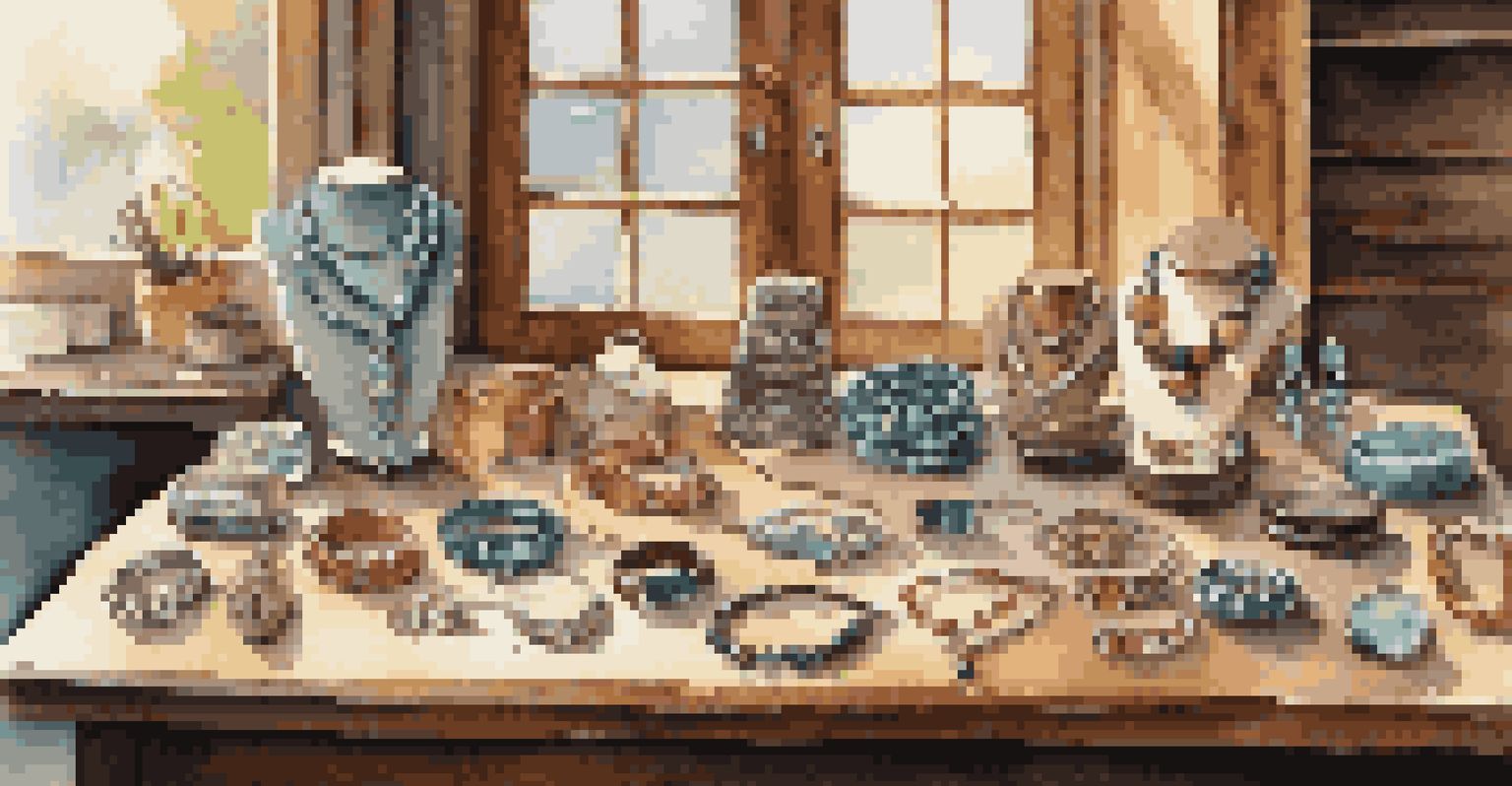Tips for Pricing Your Handmade Jewelry Fairly

Understand Your Costs Before Setting Prices
Before you can price your handmade jewelry, it's crucial to understand all the costs involved in its creation. This includes not just the materials, like beads and wire, but also tools, shipping, and even your time. Think of it like cooking a meal; you wouldn’t charge for just the ingredients without considering the effort and energy you put into preparing it.
Price is what you pay. Value is what you get.
Once you've tallied up all these costs, you can determine a baseline. This is the minimum amount you need to charge to break even. Just as a restaurant wouldn’t sell a gourmet dish for the cost of the raw ingredients, you want to ensure you're covering all aspects of your creation.
Lastly, don't forget to account for any overhead expenses, such as website fees or market stall rentals. These costs should be distributed across your items, ensuring that every piece you sell contributes to sustaining your business.
Research Similar Products in Your Niche
To get a sense of where your pricing should fall, research similar handmade jewelry in your niche. Check out local artisans and online platforms like Etsy to see what others are charging. This not only gives you a reference point but helps you understand market demand and customer expectations.

While you want to remain competitive, remember that your unique style and craftsmanship can justify higher prices. For instance, if your pieces feature rare gemstones or intricate designs, these factors can warrant a premium price. Think of it like comparing a mass-produced item to a bespoke one; the latter often carries a higher value.
Understand Your Costs First
Knowing all the costs involved in creating your jewelry, including materials and your time, is essential for setting a fair price.
However, be cautious not to undervalue your work. If you notice that your prices are significantly lower than competitors, it might be time to reevaluate and ensure you're not selling yourself short. Consider this as striking a balance between being competitive and valuing your artistry.
Factor in Your Time and Labor Costs
When pricing your handmade jewelry, it's essential to factor in your time and labor. This can be one of the most challenging aspects to quantify, especially if you love what you do. However, just like any profession, your time is valuable and should be compensated accordingly.
The price of anything is the amount of life you exchange for it.
To start, break down the time it takes to create each piece. Consider everything from design to assembly and even marketing efforts. For example, if a bracelet takes you three hours to make and you want to earn $20 per hour, that’s an additional $60 to add to your cost.
By acknowledging the time you invest, you not only create a fair price but also empower yourself as an artist. Remember, just as a skilled tradesperson charges for their expertise, you should too. This recognition can elevate your work in the eyes of potential buyers.
Incorporate a Profit Margin for Sustainability
Pricing your jewelry fairly also means incorporating a profit margin that allows your business to thrive. This is your reward for the hard work and creativity you put into your craft. Without a profit margin, you might find it challenging to sustain your business long-term.
To determine a reasonable profit margin, consider industry standards and your unique value proposition. For many handmade artisans, a profit margin of 30-50% is common. It’s akin to running a bakery; the cost of ingredients is just one part, while the profits ensure the bakery stays open.
Research Your Market Competitors
Analyzing similar products in your niche can help you position your pricing effectively while highlighting your unique craftsmanship.
Including a profit margin doesn’t mean you have to be exorbitantly priced. Instead, it reflects the true value of your craftsmanship and the business you’ve built. By doing this, you create a sustainable model that can help you grow and reach your goals.
Adjust Prices Based on Seasonal Trends
Seasonal trends play a significant role in pricing your handmade jewelry. For instance, during the holiday season, demand typically spikes, allowing you to increase prices slightly due to heightened interest. Think of it like how retailers offer discounts during off-peak times and mark up prices around holidays.
To capitalize on this, keep an eye on trends and customer preferences. If certain styles become popular during the summer, consider adjusting your prices to reflect this demand. This strategy not only maximizes your profitability but also keeps your offerings fresh and relevant.
However, be mindful of the balance; while it's beneficial to raise prices during peak times, ensure that they still reflect the value of your work. You want customers to feel they're getting quality jewelry, not just a seasonal price tag. This thoughtful approach can build trust and loyalty among your clientele.
Consider Your Target Audience's Budget
Understanding your target audience's budget is key when pricing your handmade jewelry. Knowing who your ideal customers are can guide your pricing strategy. For example, if you cater to young professionals, you might find that they’re willing to spend more on unique pieces compared to budget-conscious college students.
To tailor your prices effectively, engage with your audience through surveys or social media. Ask them what price points they consider reasonable for the type of jewelry you create. This feedback can be invaluable, similar to how a restaurant adjusts its menu prices based on customer preferences.
Regularly Reassess Your Pricing
Being open to feedback and adjusting your prices based on market trends ensures your jewelry remains competitive and valued.
By aligning your prices with your audience’s expectations, you not only attract more buyers but also foster a deeper connection with your brand. It’s about striking a balance between what you want to earn and what your customers are willing to pay.
Be Open to Feedback and Reassess Regularly
Pricing is not a one-and-done process; it requires regular reassessment and openness to feedback. As you grow as an artisan and your business evolves, your pricing should reflect those changes. Just like a gardener adjusts their care for plants based on their growth, you should adjust your prices as you gain more experience.
Encourage customers to share their thoughts on your pricing, whether through reviews or direct messages. Their insights can provide a fresh perspective and help you gauge whether your prices align with their perceived value. It’s a bit like having a trusted friend give you feedback on an outfit; their perspective can be enlightening.

Additionally, keep an eye on market trends and adjust accordingly. If you notice competitors increasing their prices or offering new styles, consider whether it’s time to follow suit. Being adaptable in your pricing strategy can help ensure your jewelry remains appealing and profitable.